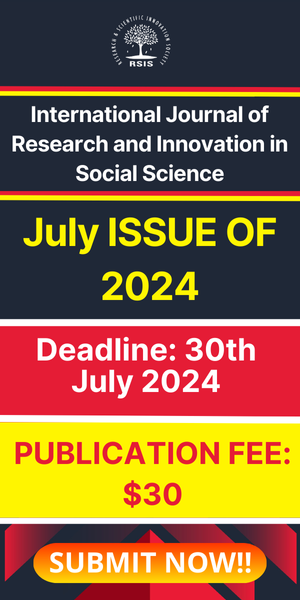Multi Hazards Risk in the Imbulpe Divisional Secretariat Division (Application of Participatory Rural Appraisal Method – PRA)
- May 21, 2019
- Posted by: RSIS
- Category: Geography
International Journal of Research and Innovation in Social Science (IJRISS) | Volume III, Issue V, May 2019 | ISSN 2454–6186
Dananjaya P.K.V.S1, Edirisooriya K.V.D2
1, 2Department of Geography & Environmental Management, Sabaragamuwa University of Sri Lanka.
Abstract: – Sri Lanka is a continental island which covers the 65,000 Km2 of land. Last few decades denoted an incensement of multi hazards in the country. As a developing country, should be paid an attention on the disaster risk mitigation. This study was focused on identification of multi hazard risk in the selected area of the Imbulpe Divisional Secretariat Division (DSD). Participatory Rural Appraisal (PRA) method was used to analyze disaster risk. The area has risk of landslide, forest fire, animal attack, drought, flood, elephant attack and high wind. Area could be named as a multi hazard risk area and animal attack could be named as the severe hazard condition in the area.
Key Words: Disaster Management, Imbulpe DSD, Multi hazards, PRA, Risk
I. INTRODUCTION
Burton et al. (1978) have defined hazards as characteristics of physical environment that harmful to man and caused by forces extraneous to him. Asian Disaster Preparedness Center (ADPC) (1999), states that “Hazard is a natural event that has potential to cause harm or loss”. Hazard can be defined in simply as a dangerous event that may cause harmful impact on the humankind. In the world some countries are being suffered by more than one hazard. According to the “Natural Hazard Hotspots” report which was written by Dilley et al (2005), from the total land area of the Earth 25 million Square kilometers of land area and 3.4 billion people which represent more than half of the world population are relatively highly exposed to at least one hazard and 790 million people are relatively highly exposed to at least two hazards. 105 million people in the world are relatively highly exposed to three or more hazards. Based on those condition the study about multi hazards came to the open debate.


